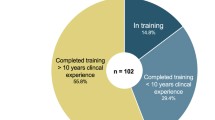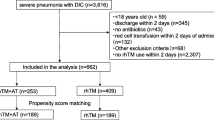Abstract
Blood purification has been widely performed for critically ill patients, even in cases without renal failure. Effective anticoagulation of the extracorporeal circuit is necessary to prevent circuit clotting. We hypothesized that administration of recombinant human-soluble thrombomodulin (rhsTM) to septic patients undergoing blood purification may prevent circuit clotting, because this agent regulates coagulation. We performed a retrospective, single-center, propensity-matched cohort study in the intensive care unit of Nishichita General Hospital. We included septic patients admitted to the intensive care unit from May 2015 to August 2020 who underwent blood purification. Patients who received rhsTM during intensive care unit admission to the end of the first blood purification (rhsTM group) were matched 1:1 with other patients (control group). The primary outcome was the occurrence of circuit clotting during the first blood purification. A total of 138 patients were included in the study [43 patients (31%) in the rhsTM group and 95 patients (69%) in the control group]. After propensity score matching, 42 pairs of patients were selected, and patients in the rhsTM group had a lower incidence of circuit clotting (21 vs. 55%, P = 0.003). One case of major bleeding occurred in the rhsTM group, but there was no difference in the incidence of major bleeding between groups (2 vs. 0%, P = 1.0). In conclusion, this propensity-matched cohort study indicated that the administration of rhsTM to septic patients undergoing blood purification may prevent extracorporeal circuit clotting.

Similar content being viewed by others
References
Nishida O, Nakamura T, Kuriyama N, Hara Y, Yumoto M, Shimomura Y, et al. Sustained high-efficiency daily diafiltration using a mediator—adsorbing membrane (Shedd-fA) in the treatment of patients with severe sepsis. Contrib Nephrol. 2011;173:172–81.
Nakamura M, Oda S, Sadahiro T, Hirayama Y, Watanabe E, Tateishi Y, et al. Treatment of severe sepsis and septic shock by CHDF using a PMMA membrane hemofilter as a cytokine modulator. Contrib Nephrol. 2010;166:73–82.
Matsuda K, Moriguchi T, Oda S, Hirasawa H. Efficacy of continuous hemodiafiltration with a cytokine-adsorbing hemofilter in the treatment of acute respiratory distress syndrome. Contrib Nephrol. 2010;166:83–92.
Nakamura M, Oda S, Sadahiro T, Hirayama Y, Tateishi Y, Abe R, et al. The role of hypercytokinemia in the pathophysiology of tumor lysis syndrome (TLS) and the treatment with continuous hemodiafiltration using a polymethylmethacrylate membrane hemofilter (PMMA-CHDF). Transfus Apher Sci. 2009;40:41–7.
Srisawat N, Lawsin L, Uchino S, Bellomo R, Kellum JA. BEST Kidney Investigators. Cost of acute renal replacement therapy in the intensive care unit: Results from The Beginning and Ending Supportive Therapy for the Kidney (BEST Kidney) study. Crit Care. 2010;14:R46.
Brandenburger T, Dimski T, Slowinski T, Kindgen-Milles D. Renal replacement therapy and anticoagulation. Best Pract Res Clin Anaesthesiol. 2017;31:387–401.
Zarbock A, Küllmar M, Kindgen-Milles D, Wempe C, Gerss J, Brandenburger T, et al. Effect of regional citrate anticoagulation vs systemic heparin anticoagulation during continuous kidney replacement therapy on dialysis filter life span and mortality among critically Ill patients with acute kidney injury: a randomized clinical trial. JAMA. 2020;324:1629–39.
Maruyama Y, Yoshida H, Uchino S, Yokoyama K, Yamamoto H, Takinami M, et al. Nafamostat mesilate as an anticoagulant during continuous veno-venous hemodialysis: a three-year retrospective cohort study. Int J Artif Organs. 2011;34:571–6.
Mohri M. ART-123: recombinant human soluble thrombomodulin. Cardiovasc Drug Rev. 2000;18:312–25.
Kienast J, Juers M, Wiedermann CJ, Hoffmann JN, Ostermann H, Strauss R, et al. Treatment effects of high-dose antithrombin without concomitant heparin in patients with severe sepsis with or without disseminated intravascular coagulation. J Thromb Haemost. 2006;4:90–7.
du Cheyron D, Bouchet B, Bruel C, Daubin C, Ramakers M, Charbonneau P. Antithrombin supplementation for anticoagulation during continuous hemofiltration in critically ill patients with septic shock: a case-control study. Crit Care. 2006;10:R45.
Singer M, Deutschman CS, Seymour CW, Shankar-Hari M, Annane D, Bauer M, et al. The third international consensus definitions for sepsis and septic shock (Sepsis-3). JAMA. 2016;315:801–10.
Gando S, Wada H, Asakura H, Iba T, Eguchi Y, Okamoto K, et al. Evaluation of new Japanese diagnostic criteria for disseminated intravascular coagulation in critically ill patients. Clin Appl Thromb Hemost. 2005;11:71–6.
Fu X, Liang X, Song L, Huang H, Wang J, Chen Y, et al. Building and validation of a prognostic model for predicting extracorporeal circuit clotting in patients with continuous renal replacement therapy. Int Urol Nephrol. 2014;46:801–7.
Monchi M, Berghmans D, Ledoux D, Canivet JL, Dubois B, Damas P. Citrate vs. heparin for anticoagulation in continuous venovenous hemofiltration: A prospective randomized study. Intensive Care Med. 2004;30:260–5.
Oudemans-van Straaten HM. Hemostasis and thrombosis in continuous renal replacement treatment. Semin Thromb Hemost. 2015;41:91–8.
Levi M, van der Poll T. Coagulation and sepsis. Thromb Res. 2017;149:38–44.
Oudemans-van Straaten HM, van Schilfgaarde M, Molenaar PJ, Wester JP, Leyte A. Hemostasis during low molecular weight heparin anticoagulation for continuous venovenous hemofiltration: a randomized cross-over trial comparing two hemofiltration rates. Crit Care. 2009;13:R193.
Shimomura Y, Suga M, Kuriyama N, Nakamura T, Sakai T, Kato Y, et al. Recombinant human thrombomodulin inhibits neutrophil extracellular trap formation in vitro. J Intensive Care. 2016;4:48.
Valeriani E, Squizzato A, Gallo A, Porreca E, Vincent JL, Iba T, et al. Efficacy and safety of recombinant human soluble thrombomodulin in patients with sepsis-associated coagulopathy: a systematic review and meta-analysis. J Thromb Haemost. 2020;18:1618–25.
Chua HR, Baldwin I, Bailey M, Subramaniam A, Bellomo R. Circuit lifespan during continuous renal replacement therapy for combined liver and kidney failure. J Crit Care. 2012;27:744.e7-15.
Brain M, Winson E, Roodenburg O, McNeil J. Non anti-coagulant factors associated with filter life in continuous renal replacement therapy (CRRT): a systematic review and meta-analysis. BMC Nephrol. 2017;18:69.
Acknowledgements
We thank Yusuke Misu (Clinical Engineer) for their commitment to the study. We also thank Editage (www.editage.com) for English language editing.
Author information
Authors and Affiliations
Corresponding authors
Ethics declarations
Conflict of interest
The authors declare that they have no conflict of interest.
Additional information
Publisher's Note
Springer Nature remains neutral with regard to jurisdictional claims in published maps and institutional affiliations.
Rights and permissions
About this article
Cite this article
Hinoue, T., Yatabe, T., Uchiyama, S. et al. Influence of recombinant human-soluble thrombomodulin on extracorporeal circuit clotting in septic patients undergoing blood purification: a propensity-matched cohort study. J Artif Organs 24, 485–491 (2021). https://doi.org/10.1007/s10047-021-01268-2
Received:
Accepted:
Published:
Issue Date:
DOI: https://doi.org/10.1007/s10047-021-01268-2




